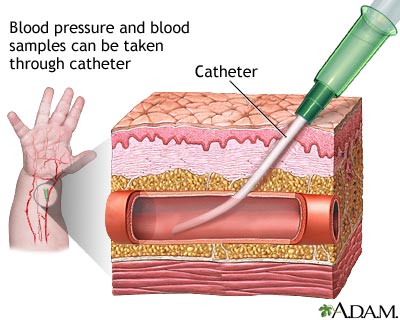Peripheral arterial line

Peripheral arterial line
A peripheral arterial line is a small, short plastic catheter placed through the skin into an artery of the arm or leg. The purpose of a peripheral arterial line is to allow continuous monitoring of blood pressure and, when necessary, to allow frequent blood samples to be drawn for testing without needing to repeatedly stick your baby.
Reviewed By
Kimberly G. Lee, MD, MSc, IBCLC, Clinical Professor of Pediatrics, Division of Neonatology, Medical University of South Carolina, Charleston, SC. Review provided by VeriMed Healthcare Network. Also reviewed by David Zieve, MD, MHA, Medical Director, Brenda Conaway, Editorial Director, and the A.D.A.M. Editorial team.
 All rights reserved.
All rights reserved.